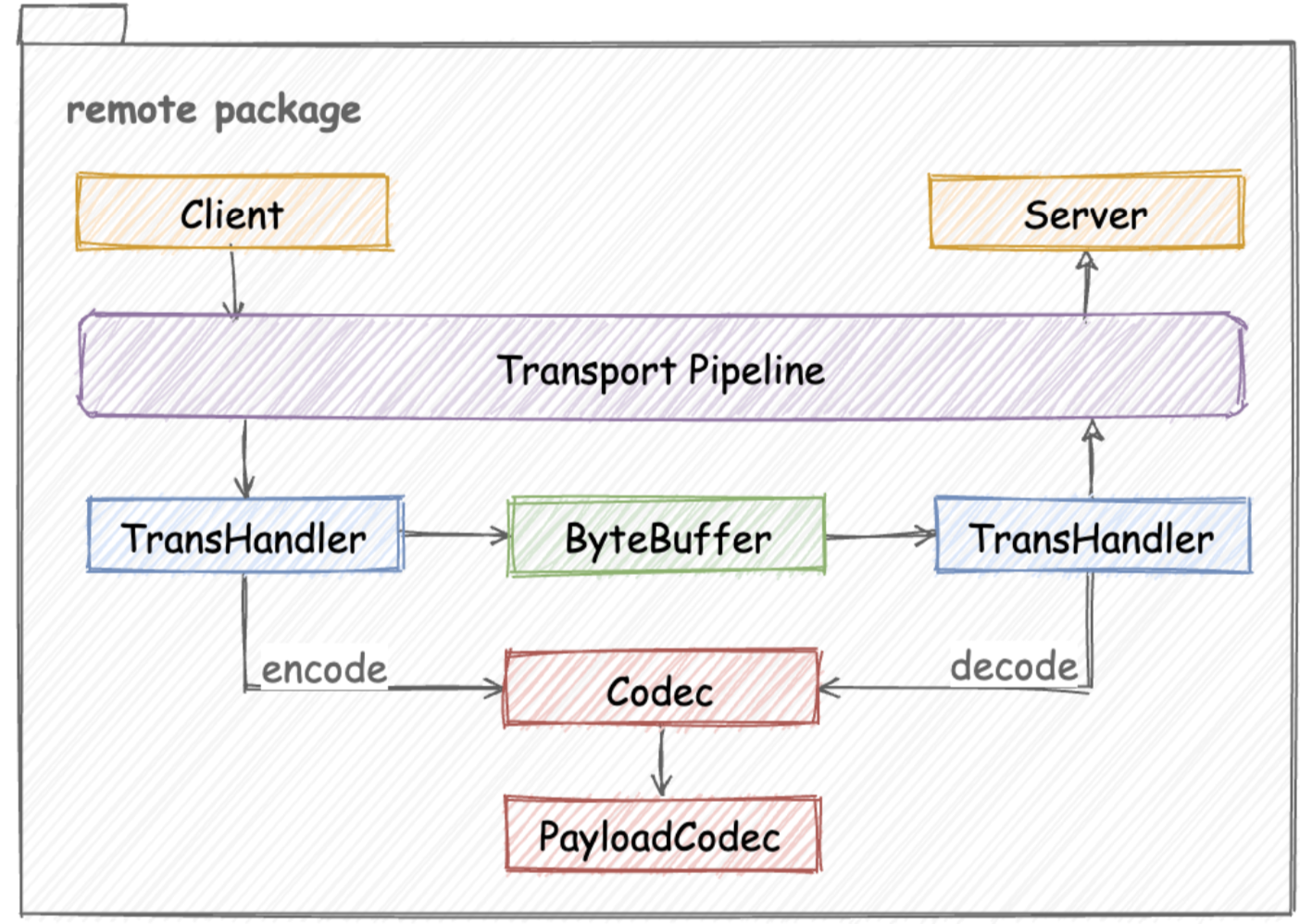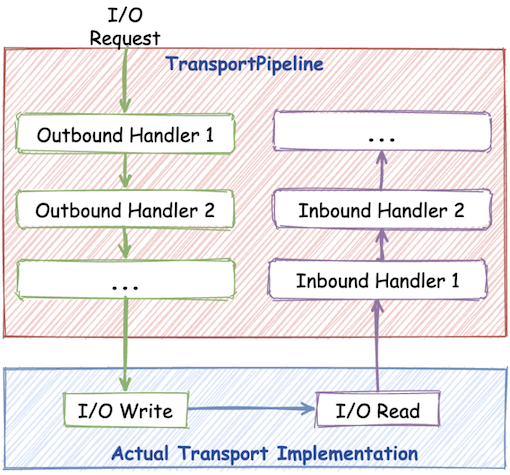
Kitex Transport Pipeline-Bound 扩展

Transport Pipeline 参考 Netty ChannelPipeline,提供 Inbound 和 Outbound 接口,支持对消息或 I/O 事件扩展。基于 In/OutboundHandler 可以扩展实现 TLS、限流、透传信息处理等。如下图所示,各个 BoundHandler 会串行依次执行。

接口定义
// OutboundHandler is used to process write event.
type OutboundHandler interface {
Write(ctx context.Context, conn net.Conn, send Message) (context.Context, error)
}
// InboundHandler is used to process read event.
type InboundHandler interface {
OnActive(ctx context.Context, conn net.Conn) (context.Context, error)
OnInactive(ctx context.Context, conn net.Conn) context.Context
OnRead(ctx context.Context, conn net.Conn) (context.Context, error)
OnMessage(ctx context.Context, args, result Message) (context.Context, error)
}默认扩展
- 服务端限流 Handler
Kitex 支持连接级别和请求级别限流,限流是为了保障服务的可用性,当达到阈值应当及时限流,放到 Transport 层可以达到及时限流的目的,实现见 limiter_inbound.go。
- 连接级别限流 OnActive(), OnInactive()
- 请求级别限流 OnRead()
- 元信息透传 Handler
元信息透传是基于传输协议透传一些 RPC 额外的信息给下游,同时读取传输协议中上游透传的信息,实现见 transmeta_bound.go。
- 写入透传信息 Write()
- 读取透传信息 OnMessage()
为更明确的为使用者元信息透传的扩展能力,Kitex 单独定义了信息透传的处理接口 MetaHandler,这里会执行 MetaHandler 进行透传信息的处理。
// MetaHandler reads or writes metadata through certain protocol.
type MetaHandler interface {
WriteMeta(ctx context.Context, msg Message) (context.Context, error)
ReadMeta(ctx context.Context, msg Message) (context.Context, error)
}指定自定义的 BoundHandler
- 服务端
option: WithBoundHandler
svr := xxxservice.NewServer(handler, server.WithBoundHandler(yourBoundHandler))
- 调用端
option: WithBoundHandler
cli, err := xxxservice.NewClient(targetService, client.WithBoundHandler(yourBoundHandler))